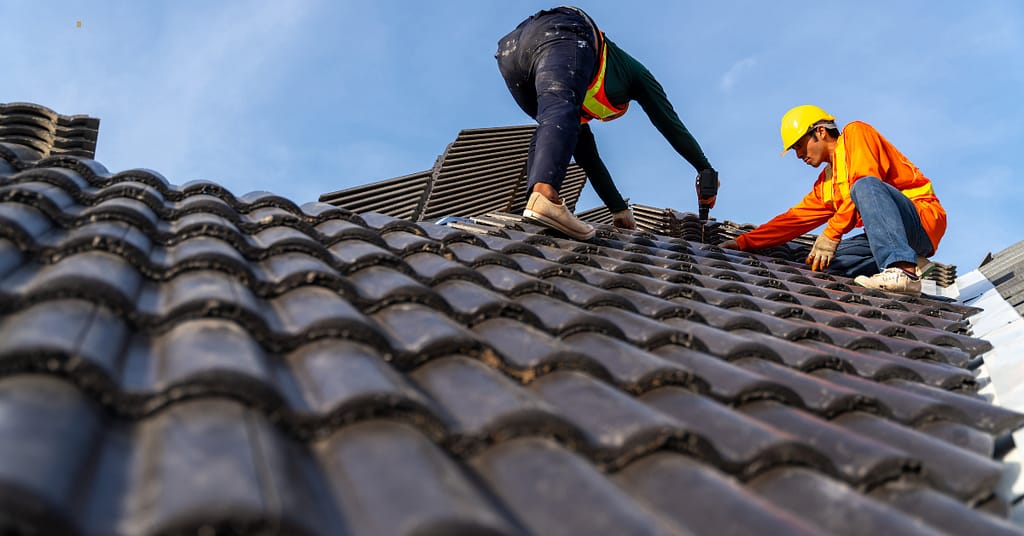While curb appeal is one important consideration for a roof, it also has to protect your property from inclement weather. That’s a big deal in Texas, where high heat and sudden hailstorms can wreak havoc on cheap or unmaintained roofs. So, what type of roof will keep your property safe? You can see a comparison of all major roofing materials in our comprehensive roofing guide. But today, we’ll take a closer look at how two premium materials stack up: concrete/fiber cement tiles and clay tiles. Here’s what you need to know.
Concrete Roofs (Fiber Cement Roofs)
Concrete tiles are made by blending cement, sand, and water. They’re exceptionally durable alone, but incorporating fiber into the mix can make them even stronger and more flexible. This variation is called a fiber cement tile. Because concrete is so easy to manipulate, many textures and styles are possible — you can even mimic the look of traditional roofing materials like wood or clay. The heaviness of concrete must also be considered: some structures were simply not made to hold up a concrete roof.
Clay Roofs
Clay tiles bring a warm and classic look to any roof. Made by baking clay in a kiln, these tiles are extremely tough but also quite expensive. They’re commonly found on Mediterranean, Spanish, and Southwestern-style homes. While texture and color options are a bit more limited with clay, no other material quite matches the singular look of high-quality clay tiles.
Fiber Cement Roofs vs. Clay Roofs
Cost Effectiveness
Make no mistake, fiber cement tiles are a premium roofing material compared to wood or asphalt. However, compared to clay, fiber cement has a much lower upfront cost. Due to their long lifespan (over 50 years) and low maintenance needs, these tiles are a great investment for premium protection with a fair price tag.
Clay tiles require skilled labor for installation due to their weight and fragility, which can add to the overall cost (so do fiber cement tiles, but installation tends to be slightly less expensive). But, clay tiles can last well over 75 years, which is significantly longer than fiber cement. This makes clay a particularly strong investment — and its unmatched curbside appeal can even increase your home’s value.
Toughness
Concrete tiles, particularly fiber cement, are incredibly tough and can withstand the harsh elements of Texas weather. They’re highly resistant to cracking, hail, and the effects of extreme heat and humidity. With proper care, they can last over 50 years. However, very heavy impacts (such as severe hail) can cause chipping. Still, fiber cement is still far more durable than standard materials like asphalt or wood.
Clay tiles can provide over 75 years of great protection, including natural fire resistance, which is a significant advantage in areas prone to wildfires. Like fiber cement, clay can crack under very heavy impacts. But, both roofing materials will still provide more protection than standard materials.
Aesthetics
Concrete tiles offer much more style options than clay. For instance, fiber cement could be fashioned into a sleek modern tile or a rustic mimic of clay or wood. However, for a certain style of home, there’s just no beating the natural beauty of clay. Available in a limited variety of warm earthy tones, like terra cotta, clay brings an elegance and character that’s tough to match. Ultimately, it’s a subjective choice, and homeowners may find that, despite having the budget for clay, a more contemporary concrete roof might be right for them.
We’re Here to Help
Need help choosing the right roof? Don’t hesitate to contact the DFW Roofers team with your questions about choosing the right roof. Call us at (469) 751-4018 or schedule an appointment through our online appointment form.


